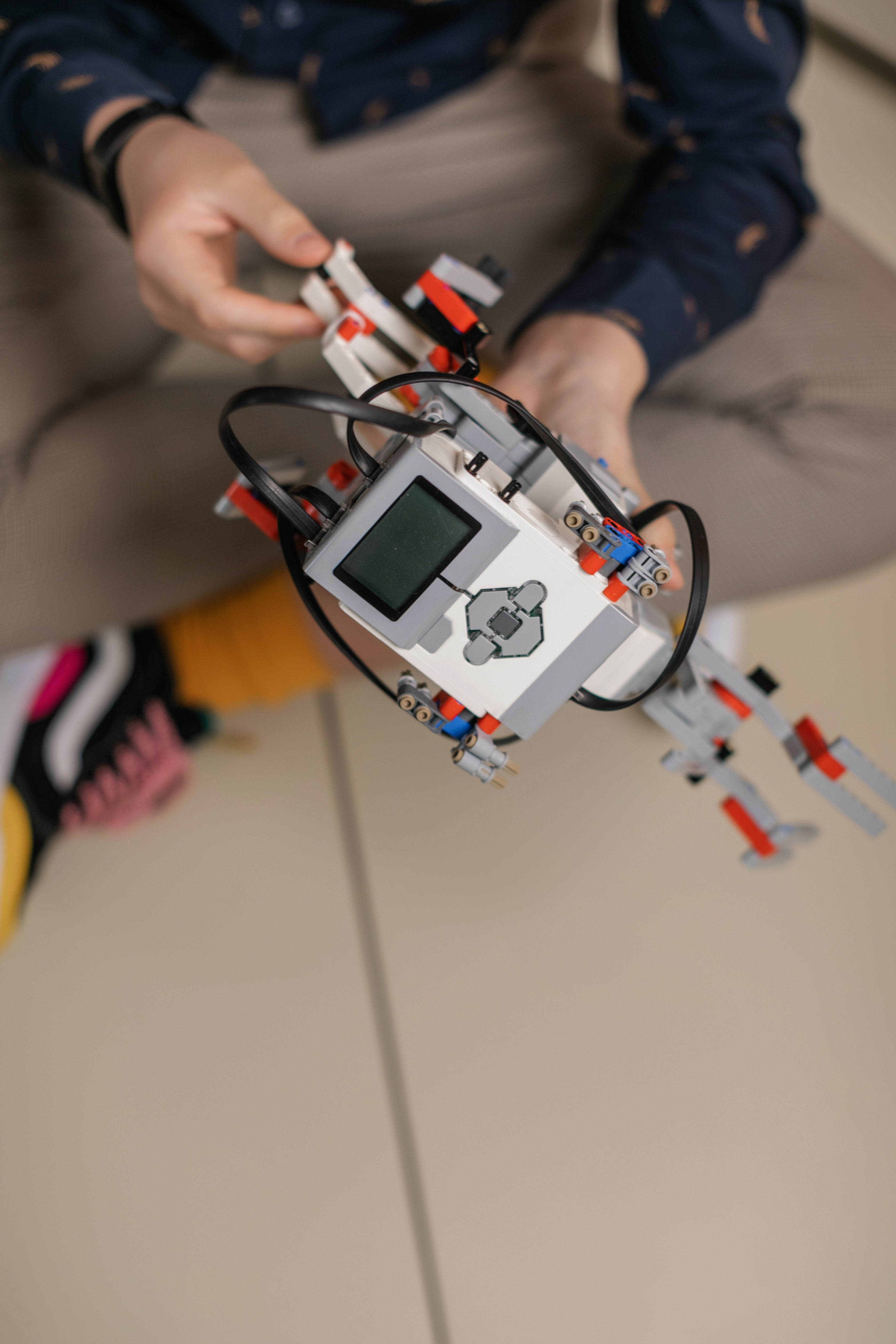How to Supercharge Reverse Logistics for Enhanced Customer Experience and Loyalty
By Rakesh Prasad , Innover Digital
As per National Retailers Federation, the total merchandise returned to retailers in 2021 added to $761 billion, a 78% increase year over year from $428 billion in 2020. The influence and impact of returns is growing to epic proportions and now mandate businesses to sit up and take note as a dominating differentiator. A positive returns experience can encourage 77% of shoppers to make more purchases as per data revealed in the Narvar - State of Returns Report. With close to 80% of shoppers getting swayed by a positive return experience, businesses need to invest mind and money into their reverse logistics operations to propel customer experience and loyalty significantly.
Here’s a list of factors that are essential to supercharge reverse logistics for enhanced customer experience and loyalty.
Data from across strata
Logistics companies sit on a treasure trove of data that can be utilized intelligently and strategically to understand patterns in reverse logistics. Dig deep into this data and it can give a clear understanding of the customers who are returning products, the kind of products that are returned, the reason behind the returns, regions that are seeing a spike in returns, time and resources consumed to successfully transport the returned products to the designated destination and more. Every product return is an opportunity to understand the customers better, trigger the next sale, and make it stick.
An emerging practice that can garner positive gains from reverse logistics is the integration of intelligence-based returns processing. The AI/ML-powered advanced analytics process also known as advanced customer score carding or return analytical algorithms can significantly enhance productivity and customer experience. In its current state, it analyzes two dominant factors namely customer’s point of return and post-journey events. The process entails applying algorithms to the available data and running it past a rules-based engine which in turn generates data-driven predictions. The predictions provide an understanding and opportunity for businesses to maximize value recovery and preserve profitability across their RL practice.
Predictive analytics can enable businesses to predict the real-time status of the load on a container, instantly notifying the carriers when the load is full - avoiding any unwarranted delays. The automated notification also helps optimize employee productivity by allotting all low-value work from a person to a machine. Another important application of advanced return analytics is at the warehouse or physical store after the initial inspection. The analytics provide for multiple variables in terms of return routes with an increased focus on demand, freeing up storage and decreasing inventory carrying costs.
A matured data-driven reverse logistics practice empowers businesses to reduce the rate of returns, improve resolution time, increase the speed of repairs, tighten compliance with applicable disposal or reclamation regulations, and maximize the capture of revenue by assessing the true value of items returned.
The post-purchase experience has become a major differentiator for businesses but rising fuel costs, inflations, and labor shortages are a constant concern limiting businesses in their tracks. Using advanced analytics provides businesses with a granular understanding of the RL journey driving increased productivity at the customer and SKU levels. This understanding strategically and tactically powers businesses with valuable insights that help in shaping return policies while improving customer experience and loyalty.
Digital entails all
Digital transformation can have a notable impact on reverse logistics. Using a contemporary technology system such as a control tower supply chains can stitch the inbound and outbound functions to provide a single view of the entire supply chain. This single view can enable logistic providers to analyze and decide the best channel or route for returned goods. It can also guide decisions about refurbishing, rerouting, liquidating, or scrapping returned goods by drawing inferences from historical data and other information updated in real-time.
One of the most prominent causes for the return of goods is wrong to fit or size accounting for 45% of the returns in 2022. Technology can significantly reduce this by introducing the right validation rules during the ordering and fulfillment process arresting errors at the front end. A digitally connected supply system can also speed up the movement of high-value goods such as electronics that depreciate significantly while on their journey through reverse logistics. Research from California Management Review points out that a $1000 product loses as much as half its value in the return process and a further 10 to 20% due to delays. A digitally in-sync system can keep a vigilant watch on the movement of these high-value products and ensure they are always fast-tracked for replacement, repair, or secondary sales.

Digitalization of the reverse logistics process can also enable the use of contemporary technology like blockchain that safeguards businesses from frauds which as per Appriss Retail research is a $27 billion problem. Businesses can avert this problem by integrating blockchain technology that tracks each product individually as it flows through the return process. Blockchain technology fits in as a perfect ally for reverse logistics helping ramp up operations to decentralize, trace, and monitor the goods delivered to the end consumers ensuring a fast and transparent returns process.
Digital maturity on part of businesses has meant that consumers are now equipped with smartphone apps that make the process of returning goods streamlined and convenient. Customers can raise return requests and also claim refunds using applications. These applications can also guide customers on drop points that are closest to their location besides providing information on the return process, real-time tracking, and more. Digitally connecting processes and the customer to a single thread not just enhances experience it also powers transparency encouraging customer loyalty.
Automation for acceleration
Introducing autonomous robots into the reverse logistics process can enable hassle-free verification, collection to drive agility and convenience. A USPS study found that 32% of companies cited manual labor tasks, including reworking, repacking, and relabeling, as the biggest challenge to returns. These time-consuming tasks can adversely impact customer experience. Add to the existing logistical challenges 30% of consumers deliberately over-order, and 19% of consumers order multiple styles opening the gates for huge volumes of returns as noted by Barclaycard Research,

With big volumes set for returns, automation is the best bet to keep the RL engine chugging along without interruptions. Deploying intelligent robots such as drones can make the task of collections that much more efficient. Drone picking up goods marked for returns, after due diligence has been digitally carried out on applications, can go a long way to optimizing the return process. Similarly, intelligent robots such as the SuperPick Polybag Picking System that combines ultra-fast 3D vision with state-of-the-art gripping technology or DHL’s, ‘Stretch’ robot developed in partnership with Boston Dynamics are smart additions to the processing or handling of products. These robots can handle a multitude of SKUs without re-programming or time-consuming training and can pick, scan, and deliver identified products of different dimensions, weights, and fragility, delivering it to any material handling system. Tasks such as sorting, categorizing, and relabelling can be carried out by such smart robots to drastically reduce resolution time for repairs and returns giving a fillip to the customer experience.
Metaverse a futuristic opportunity to traverse
Contactless contact centers hosted in the Metaverse that not just record real-time return requests but also help resolve configuration issues and suggest alternatives for upsell and cross-sell can be a futuristic addition to the return logistics process. A fast-evolving virtual environment, Metaverse gives an excellent opportunity for businesses to virtually reinstate a stronger bond with the customers. It can be a window for businesses to process returns within the virtual world. An avatar-based support center in the Metaverse can greatly enhance customer experience and drive credibility. It can be the virtual space where consumers can experience products to completely understand their features, capabilities, and functions from trained personnel. Getting hands on DIY training from experts can drastically reduce the chances of product returns. The center can not only address return requests it can also verify these requests and resolve unwarranted claims such as technical issues with appliances by guiding customers to correctly configure. Most importantly it can also give businesses an unprecedented opportunity to cross-sell and upsell.

Conclusion
The customer is king and the king’s preference to buy online and side with those giving him the best return policy is an indicator that businesses must design and develop customer-centric return policies. Businesses need to envisage a strategic, tactical, and operational plan for reverse logistics that is data-driven, digitally robust, adaptive to the latest innovations, and seamlessly integrates into the circular supply chain loop to turn the RL process from a cost center to a profit center. Businesses that think ahead can have the first-mover advantage and can capitalize on reverse logistics as a differentiator through strategies and processes that make RL an economical, agile, and sustainable practice groomed for the long run.
 Rakesh Prasad
Rakesh Prasad Rakesh is passionate about solving business problems by leveraging Digital and Analytics solutions and partnering with clients to thrive in an open digital economy. As a business leader, Rakesh has delivered consistent results in leading digital transformation programs, managing global teams and delivering business growth. Having spent 18 years at the intersection of business and technology, Rakesh understands the importance of experience and insights coming together for clients to deliver ROI-driven business outcomes.